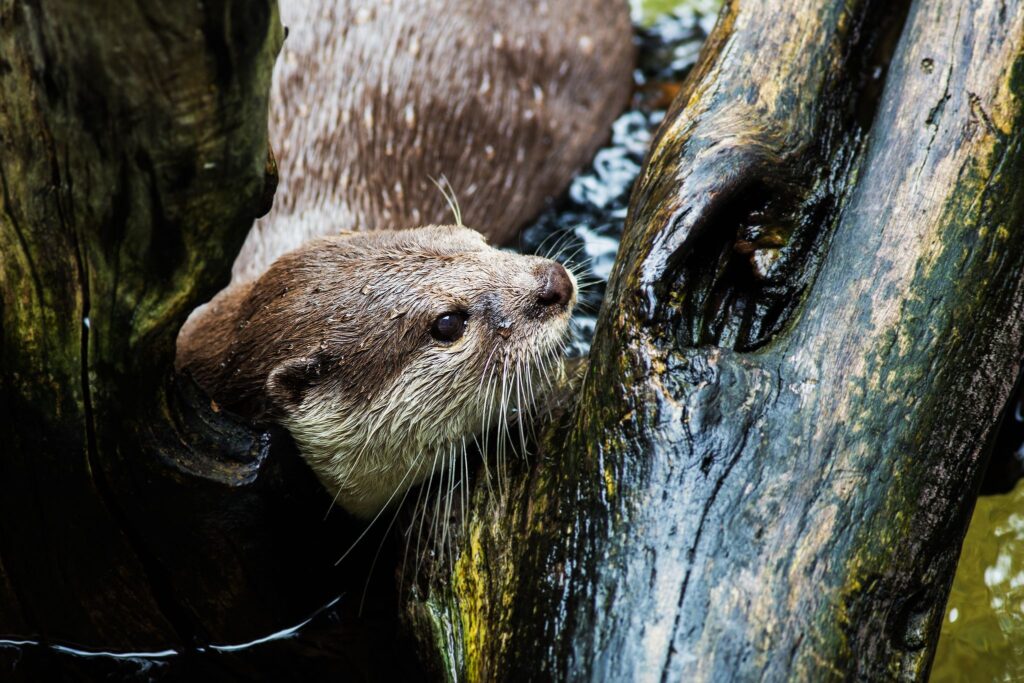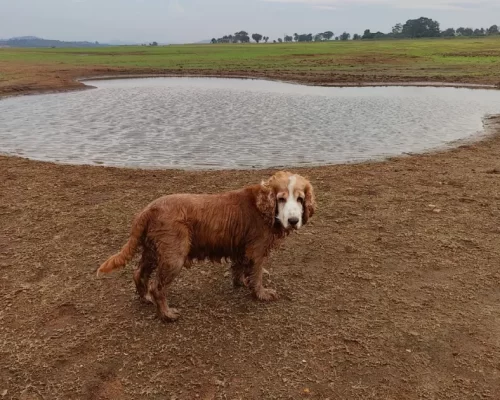The biggest tiger and Asian elephant populations in the world can be found at the Bandipur Tiger Reserve, a part of the Nilgiri Biosphere Reserve. This area is referred to as “elephant country,” and throughout the summer, hundreds converge around the Kabini reservoir’s backwaters. But can also find otter habitat here. The Kabini backwaters have a considerable population of smooth-coated otters. You can come across the smooth-coated otters when you are on a boat ride at the backwaters of Kabini.

Appearance
The smooth-coated otter is a rather large otter, weighing between 7 and 11 kilograms and measuring 59 to 64 centimetres in length from head to tail. Its larger rounded head and a hairless snout shaped like a deformed diamond set it apart from other otter species. In contrast to other otters’ more rounder tails, its tail is flattened. It has long, powerful legs and big, webbed feet with powerful claws. According to its name, it has extraordinarily short and sleek fur that is dark to reddish brown on the back and light brown to practically grey on the underside. Teats come in two pairs for females.
Distribution
Pakistan, India, Nepal, Bhutan, Bangladesh, southwest China, Myanmar, Thailand, Vietnam, Malaysia, Singapore, the Indonesian islands of Borneo, Sumatra, and Java, and Brunei have all seen sightings of the smooth-coated otter. Additionally, there is a small population in Iraq’s marshes.
It happens in regions with an abundance of fresh water, such as marshes, seasonal swamps, rivers, lakes, and rice paddies. It may exist in practically any habitat that is acceptable in areas where it is the only species of otter present. However, when it coexists with other otter species, it prefers larger bodies of water over tiny streams and canals.
It needs a nearby source of fresh water even though it is frequently found in saltwater close to the coast, particularly on smaller islands.
Behavior
Social and cooperative, smooth-coated otters hunt in packs. They are primarily nocturnal, with a brief dip in activity around noon.
They spend the night in dens they have dug amid thickets of vegetation, behind trees, or between stones. They communicate with other animals and with other members of the otter species using scent. In an activity known as sprinting, each otter has a pair of small glands at the base of the tail that is used to mark land or objects, like boulders or vegetation, close to eating places. Additionally, they use vocalisations like wails, chirps, and whistles to communicate.
Some may build permanent holts with an underwater entrance and a tunnel leading to a nest above the water, resembling a beaver dam, close to bodies of water.
Over 70% of their diet consists of fish, although they also eat small animals, frogs, insects, and crustaceans. They favour larger fish, usually between 5 and 30 cm in length, especially in places where other otter species are also present. They may go on hunts in packs of up to 11 people.
An otter group was seen hunting in Kuala Selangor Nature Park. They were almost as wide as the creek and formed an undulating, somewhat V-shaped line pointing in the direction of the movement. The centre area was inhabited by the biggest people. They moved through the creek in this pattern, forcing panicked fish to jump out of the water a few metres in front of them. Suddenly, they dove and snatched the fish in their mouths. After coming ashore, they tossed the fish onto the muddy section of the bank and consumed it whole head first.
The foraging territory of a group of otters can vary from 7 to 12 km2. In captivity, a single adult eats roughly 1 kg of food each day.



